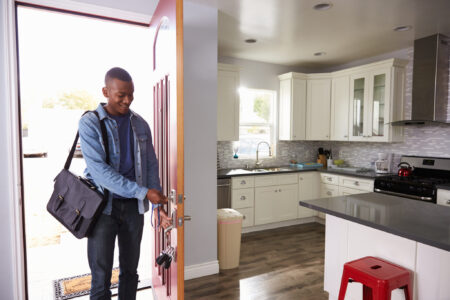Three Types of Deadbolts you Need to Know About
A deadbolt is an important mechanism to use in conjunction with your normal doorknob. They provide added safety and stability for your door due to their ability to extend into the doorframe itself. If you don’t already have one, especially on your exterior doors, here are three common types and what you need to know:
The Single-Cylinder Deadbolt
This deadbolt is the most common type used on household front doors. The single-cylinder deadbolt uses a thumb turn on the inside of the door and a key on the exterior side. These deadbolts are so prevalent since they are very effective in using them for quick access in one direction and the ability to restrict access in the opposite direction. They can be quickly locked and unlocked in the event of an emergency making these a great choice for everyday use. When installing these types of deadbolts, it’s important to install it at least 40 inches away from any glass or window. This will further prevent intrusion since intruders will not have the ability to break the glass and turn the thumb turn itself.
The Double-Cylinder Deadbolt
This deadbolt is another common one for entry doors and provides extra security since they require a key on both sides of the door. This is important to note as it surpasses the worry of using single-cylinder deadbolts that someone can break the window near your lock and turn the thumb turn itself. On the other hand, since a key is required on both sides, it is not as easily accessible in emergency situations. When installing this kind of deadbolt, ensure that it is in a place that will not hinder you in case of an emergency.
The Electronic Deadbolt
Electronic deadbolts are one of the newest choices on the market for homeowners. These types of deadbolts are reliable and convenient since you do not have to worry about a key and are often visible at night with their lit-up keypad. Homeowners who opt for this deadbolt simply need to remember their unique access code to enter. Some electronic deadbolts provide thumb turns on the interior to lock while others lock automatically. These are “non-connected locks”, meaning they are a closed system where there is no connection to other smart home technology or Wi-Fi – making it impossible to hack. Electronic deadbolts are an excellent option when you’re looking for convenience and safety; just as long as you remember your code and do not share it with anyone.

